
Downtown Louisville is the largest central business district in the Commonwealth of Kentucky and the urban hub of the Louisville, Kentucky Metropolitan Area. Its boundaries are the Ohio River to the north, Hancock Street to the east, York and Jacob Streets to the south, and 9th Street to the west. As of 2015, the population of downtown Louisville was 4,700, although this does not include directly surrounding areas such as Old Louisville, Butchertown, NuLu, and Phoenix Hill.

The LeVeque Tower is a 47-story skyscraper in Downtown Columbus, Ohio. At 555 feet 5 inches (169.29 m) it was the tallest building in the city from its completion in 1927 to 1974, and remains the second-tallest today.
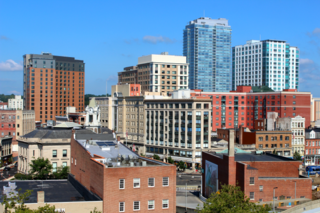
Downtown Stamford, or Stamford Downtown, is the central business district of the city of Stamford, Connecticut, United States. It includes major retail establishments, a shopping mall, a university campus, the headquarters of major corporations and Fortune 500 companies, as well as other retail businesses, hotels, restaurants, offices, entertainment venues and high-rise apartment buildings.

Downtown Columbus is the central business district of Columbus, Ohio. Downtown is centered on the intersection of Broad and High Streets, and encompasses all of the area inside the Inner Belt. Downtown is home to most of the tallest buildings in Columbus.
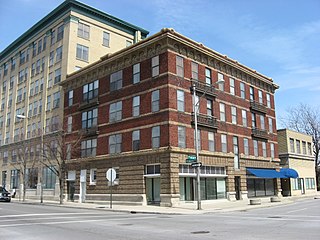
The Barr Hotel is a historic hotel on the eastern side of downtown Lima, Ohio, United States. Built in 1914, the Neoclassical hotel occupies the northeastern corner of the intersection of High and Union Streets.

The Mississippi Lofts and Adler Theatre is an apartment building and theater complex located in downtown Davenport, Iowa, United States. It is individually listed on the National Register of Historic Places by its original name, the Hotel Mississippi and RKO Orpheum Theater. The Hotel Mississippi was listed on the Davenport Register of Historic Properties in 2005. In 2020 the complex was included as a contributing property in the Davenport Downtown Commercial Historic District.

The Toledo and Ohio Central Railroad Station, today named Station 67, is a union meeting space and event hall located in Franklinton, near Downtown Columbus, Ohio. Built by the Toledo and Ohio Central Railroad from 1895 to 1896, it served as a passenger station until 1930. It served as an office and shelter for Volunteers of America from 1931 to 2003, and has been the headquarters of International Association of Fire Fighters Local 67, a firefighters' union, since 2007. The building was placed on the National Register of Historic Places in 1973. During its history, the building has experienced fires and floods, though its relatively few owners have each made repairs and renovations to preserve the building's integrity. The building is the last remaining train station in Columbus.
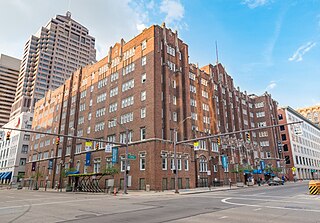
The Downtown YMCA is a historic former YMCA building in Downtown Columbus, Ohio. It was the largest YMCA resident facility in the United States. It was listed on the National Register of Historic Places in 1993. The seven-story building was designed in the Jacobethan Revival and Late Gothic Revival styles by Chicago architecture firm Shattuck & Layer.

The Buckeye Building, also known as the Buckeye State Building and Loan Company Building, is a historic building in Downtown Columbus, Ohio. The 16-story building was built from 1926 to 1927. It was the headquarters for the Buckeye State Building and Loan Company, and after 1949 for the Buckeye Federal Savings and Loan Association. It was listed on the National Register of Historic Places in 2004. The building was converted into a hotel, opening as a Marriott Residence Inn in 2008.
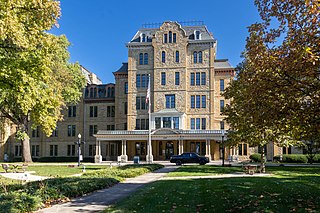
Columbus Public Health is the health department of Columbus, Ohio. The department is accredited by the Public Health Accreditation Board. The department dates to 1833, when the city's mayor appointed five citizens to help with its cholera outbreak. It became a permanent body to activate whenever health emergencies arose.
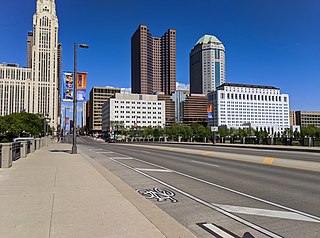
Broad Street is a major thoroughfare in Central Ohio, predominantly in Franklin County and Columbus. It stretches east from West Jefferson at Little Darby Creek to Pataskala. The street is considered one of Columbus's two main roads, along with High Street.
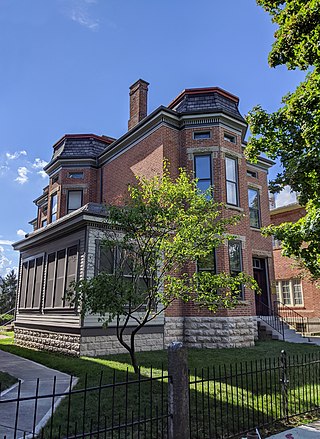
The Columbus Landmarks Foundation, known as Columbus Landmarks, is a nonprofit historic preservation organization in Columbus, Ohio. The foundation is best-known for its list of endangered sites in the city and its annual design award, given to buildings, landscapes, and other sites created or renovated in Columbus. It was established in 1977 as a project of the Junior League of Columbus, Ohio, following the demolition of the city's historic Union Station. It is headquartered at 57 Jefferson Avenue, a contributing structure in the Jefferson Avenue Historic District in Downtown Columbus.
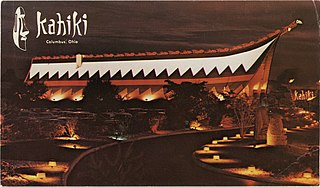
The Kahiki Supper Club was a Polynesian-themed restaurant in Columbus, Ohio. The supper club was one of the largest tiki-themed restaurants in the United States, and for a time, the only one in Ohio. It operated at its Eastmoor location on Broad Street beginning in 1961, at the height of tiki culture's popularity. The Kahiki was listed on the National Register of Historic Places in 1997, but closed and was demolished in 2000. It was described as an exceptionally important example of a themed restaurant and the most elaborate tiki restaurant ever built.
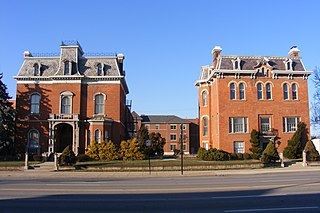
The Ohio Farm Bureau Federation Offices are two historic buildings in Downtown Columbus, Ohio. The buildings were listed together on the National Register of Historic Places in 1987. They are located at the junction of Interstate 71 and Broad Street, a heavily trafficked area.

The Ohio Finance Building is a historic building in Downtown Columbus, Ohio. It was listed on the National Register of Historic Places in 2014.
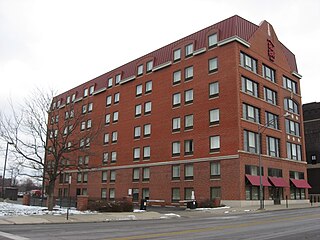
The Welsbach Building is a historic building in Downtown Columbus, Ohio. It was built in 1906 and listed on the National Register of Historic Places in 1984. The building served as the middle western department of the Welsbach Company, a manufacturer of gas lights, from 1907 to 1929.

The Hartman Hotel is an condominium complex and former hotel and office building in Downtown Columbus, Ohio. The building was completed in 1898 and was listed on the National Register of Historic Places in 2018.

The Garfield-Broad Apartments is a historic building in the Olde Towne East neighborhood of Columbus, Ohio. It was built in 1929 and added to the National Register of Historic Places in 1986.

The Trolley District is a mixed-use complex in Columbus, Ohio. The three-acre (1.2 ha) site houses the East Market, a public market and food hall, as well as two bars, restaurants, a brewery, and event space, with plans for neighboring apartments. The property is located in the city's Franklin Park neighborhood and is a contributing part of the Columbus Near East Side District, listed on the National Register of Historic Places.






















